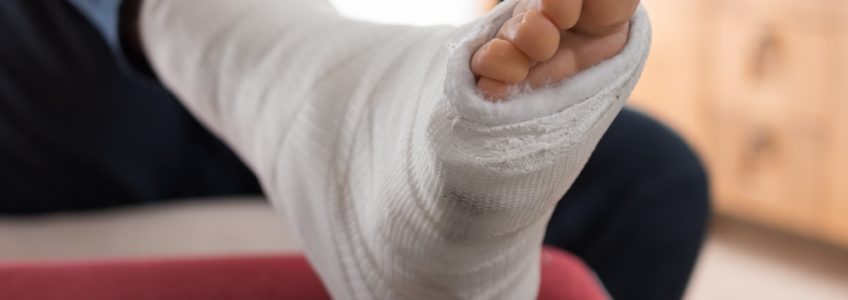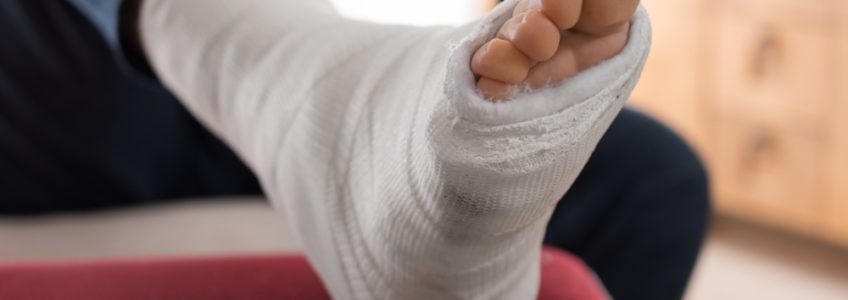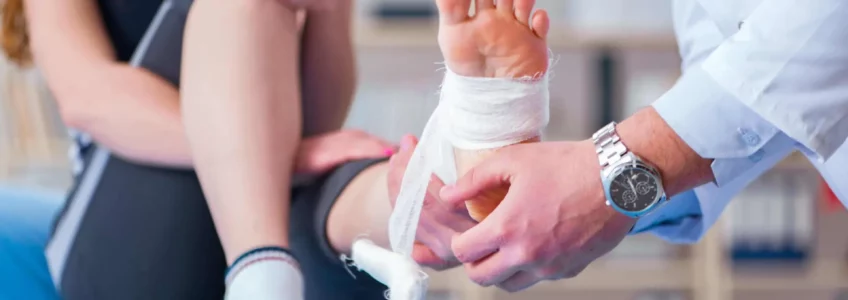
Understanding Spiral Fracture Fibula Recovery Time
When it comes to spiral fracture fibula recovery time, people often wonder how long it will take to get back on their feet.
If you are searching for clear and concise answers, here is what you need to know right off the bat:
- Basic Recovery Time: Typically, a spiral fracture in the fibula takes around 3 to 6 months to heal fully.
- Initial Immobilization: You may need to wear a medical boot or cast for about 6 to 8 weeks.
- Weight-Bearing Restrictions: Early weeks often involve using crutches or a knee scooter to avoid putting weight on the injured leg.
- Physical Therapy: Ongoing therapy will help regain strength and mobility.
At Ventura Orthopedics, we aim to provide expert guidance and care, ensuring you have a smooth and effective recovery. Our team is well-equipped to support you through this challenging time, from the initial diagnosis to the final stages of rehabilitation.
A spiral fracture in the fibula occurs from a twisting force that literally spirals around the bone, causing a break. This type of injury is often seen in sports events, accidents, or any situation involving sudden twists or falls. While the road to recovery might seem long, with the right care and attention, you can expect to return to your regular activities in due time.

This detailed infographic breaks down the recovery timeline and important steps you will go through during the healing process.
Understanding Spiral Fractures
What is a Spiral Fracture?
A spiral fracture happens when a bone breaks due to a twisting force. Imagine twisting a stick until it snaps—this is similar to what happens in a spiral fracture. The break spirals around the bone, much like a corkscrew. This type of fracture is a complete break, meaning the bone is split into at least two pieces.
Spiral fractures often occur in long bones, such as the tibia (shinbone) or fibula (calf bone). These bones are more prone to twisting injuries because of their length and structure.
Common Causes of Spiral Fractures
Several situations can lead to a spiral fracture:
- Sports Injuries: Athletes are at high risk, especially in sports involving sudden twists and turns, like soccer, basketball, or skiing.
- Accidents: Falls or car accidents can exert a twisting force on bones, resulting in a spiral fracture.
- Physical Violence: In some cases, these fractures can be a sign of physical abuse, especially in young children.
Symptoms of a Spiral Fracture
If you suspect a spiral fracture, look for the following symptoms:
- Pain: The most obvious sign. The pain can be sharp or dull, depending on the severity of the break.
- Swelling and Redness: The injured area may swell and turn red.
- Bruising: Bruises can appear around the fracture site.
- Loss of Function: You might find it hard to move the affected limb.
- Tenderness: The area around the break will be sensitive to touch.
In severe cases, you might even see jagged bones poking through the skin, a condition known as an open fracture.

Spiral fractures need prompt medical attention to ensure proper healing and to avoid complications.
Diagnosis and Initial Treatment
How Spiral Fractures are Diagnosed
Diagnosing a spiral fracture starts with a physical examination. Your doctor will look for signs like swelling, bruising, and loss of function in the affected limb. They will also ask about how the injury happened to understand the potential severity.
X-rays are the primary tool for diagnosing spiral fractures. They provide a clear image of the bone and show the spiral pattern of the break. Sometimes, your healthcare provider might order a CT scan to get a more detailed view, especially if the fracture is complex or if they need to plan for surgery.
Immediate Steps After Injury
If you suspect a spiral fracture, it’s crucial to act quickly. Start with the RICE method:
- Rest: Avoid moving the injured limb.
- Ice: Apply ice packs to reduce swelling and pain.
- Compression: Use an elastic bandage to wrap the area, but not too tightly.
- Elevation: Keep the injured limb elevated above heart level to minimize swelling.

Splinting is also essential to immobilize the affected area until you can get professional medical help. Avoid putting any weight on the injured limb, as this can worsen the fracture.
In an emergency, call for medical help immediately. If you see bones poking through the skin, cover the area with a clean cloth and seek urgent medical care.
Treatment Options for Spiral Fractures
When it comes to treating a spiral fracture in the fibula, doctors generally consider both surgical and non-surgical options. The choice depends on the fracture’s severity, the patient’s overall health, and other factors.
Non-Surgical Treatments
Non-surgical treatments are often the first line of defense for less severe spiral fractures. These methods aim to immobilize the bone and allow it to heal naturally.
Casting and Bracing
- Casting: For many spiral fractures, doctors will apply a cast to immobilize the bone. The cast keeps the bone in place and prevents further injury. It usually stays on for about 6-12 weeks, depending on the healing progress.
- Bracing: Sometimes, a brace is used instead of a cast. Braces offer more flexibility and can be adjusted as swelling decreases.
Physical Therapy
- Initial Phase: During the early recovery phase, physical therapy focuses on gentle exercises to maintain muscle strength and prevent stiffness.
- Advanced Phase: As healing progresses, more intensive physical therapy helps restore full range of motion and strength.
Medication
- Pain Management: Acetaminophen with codeine is commonly prescribed for pain relief. Unlike ibuprofen, it doesn’t slow down the healing process.
- Anti-Inflammatory: Sometimes, doctors may prescribe short-term anti-inflammatory drugs to reduce swelling.
Surgical Treatments
For more severe spiral fractures, especially those with jagged edges or significant displacement, surgical intervention may be necessary.
Open Reduction and Internal Fixation (ORIF)
- Open Reduction: In this procedure, the surgeon makes an incision to access the broken bone and realign it.
- Internal Fixation: After realignment, the bone is secured using pins, rods, or screws. These can be either permanent or temporary, depending on the case.
Pins and Screws
- Pins: Thin metal rods inserted into the bone to hold it in place.
- Screws: Used to secure the bone fragments together.
- Rods: Long metal rods that run through the center of the bone to provide stability.
Post-Surgery Care
- Immobilization: A cast or brace is usually applied after surgery to keep the bone stable.
- Physical Therapy: Essential for regaining strength and mobility. Exercises are gradually intensified as the bone heals.
- Pain Management: Similar to non-surgical treatment, acetaminophen with codeine is often used for post-surgical pain relief.
By understanding these treatment options, you can better prepare for the road to recovery. Always follow your healthcare provider’s advice to ensure the best possible outcome.
Spiral Fracture Fibula Recovery Time
Early Recovery Phase (0-6 Weeks)
In the first 0-6 weeks after a spiral fracture of the fibula, the focus is on immobilization and pain management.
Immobilization: A cast or splint is used to keep the bone stable and in proper alignment. This helps prevent further injury and allows the bone to start healing.
Pain Management: Pain is managed with medications like acetaminophen or ibuprofen. Your doctor may prescribe stronger painkillers if needed.
Initial Physical Therapy: Gentle physical therapy may begin a few days after the injury. This often includes simple exercises to maintain flexibility in the joints above and below the fracture.
Weight-Bearing Guidelines: During this phase, you should avoid putting weight on the injured leg. Crutches or a walker will help you move around without stressing the fracture.
Mid Recovery Phase (6-12 Weeks)
From weeks 6 to 12, the bone continues to heal, and you can start to put some weight on the injured leg.
Gradual Weight-Bearing: Your doctor will guide you on when and how to start putting weight on your leg. This is usually done gradually to avoid overloading the healing bone.
Advanced Physical Therapy: Physical therapy becomes more intense, focusing on improving range of motion and strength. Activities might include stretching, light resistance exercises, and balance training.
Brace Removal: If you had a brace, it might be removed during this phase. This allows more freedom of movement but still provides some support.
Full Recovery Phase (3-6 Months)
In the final phase, from 3 to 6 months, the goal is to return to normal activities while ensuring the bone is fully healed.
Full Weight-Bearing: By now, you should be able to put full weight on the injured leg. Your healthcare provider will confirm this through X-rays and physical exams.
Strengthening Exercises: Physical therapy will focus on strengthening the muscles around the fracture site. This helps to support the bone and prevent future injuries.
Return to Normal Activities: You can gradually return to your regular activities, including work and sports. However, follow your doctor’s advice and not rush the process.
By understanding these recovery stages, you can better prepare for the journey ahead. Always follow your healthcare provider’s advice to ensure the best possible outcome.
Complications and Long-Term Effects
Common Complications
Spiral fractures can lead to several complications if not treated properly. Some common complications include:
Compartment Syndrome: This is a severe condition where swelling and pressure build up in a muscle compartment, cutting off blood flow. It can cause permanent damage if not treated promptly.
Malunion: This happens when the bone heals improperly, leading to deformities and functional impairments. It often requires corrective surgery.
Infection: Particularly in cases where surgery is needed, infections can occur. This is why antibiotics and proper wound care are crucial.
Long-Term Management
Managing a spiral fracture doesn’t end with the bone healing. Long-term care is essential to ensure full recovery and prevent future issues.
Physical Therapy: Continued physical therapy is vital for regaining full function. Therapists use exercises to improve strength, flexibility, and range of motion.
Lifestyle Adjustments: You may need to make some changes in your daily routine. For example, avoiding high-impact activities can help prevent re-injury.
Follow-Up Care: Regular check-ups with your healthcare provider are essential. They can monitor your progress and address any complications early.
Prevention Tips
While accidents happen, some steps can reduce the risk of fractures:
- Wear Protective Gear: Especially during sports or high-risk activities.
- Maintain Bone Health: Ensure you get enough calcium and vitamin D.
- Exercise Regularly: Strengthen muscles to support your bones.
- Avoid Smoking and Excessive Alcohol: These can weaken bone structure.
By understanding these potential complications and long-term management strategies, you can better navigate your recovery journey. Always consult your healthcare provider for personalized advice.
Frequently Asked Questions about Spiral Fracture Fibula Recovery Time
Can You Walk on a Fibula Spiral Fracture?
Walking on a fibula spiral fracture is generally not recommended, especially in the early stages of recovery. The bone needs time to heal properly, and putting weight on it too soon can cause complications.
Weight-bearing guidelines vary depending on the severity of the fracture and the treatment method used. Your healthcare provider will give you specific advice tailored to your situation.
- Early Stages (0-6 weeks): Usually, no weight-bearing is allowed. You’ll likely need crutches or a knee scooter to keep weight off the injured leg.
- Mid Recovery (6-12 weeks): Gradual weight-bearing may be introduced. A physical therapist can help you learn how to use assistive devices like a walker or cane.
- Full Recovery (3-6 months): As you progress, you can start to bear full weight on the leg, but always follow your healthcare provider’s guidance.
How Long Does a Spiral Fracture Take to Heal?
The healing timeline for a spiral fracture can vary widely but generally follows these stages:
- Early Recovery Phase (0-6 Weeks): Immobilization and pain management are crucial. Initial physical therapy might start to maintain some mobility.
- Mid Recovery Phase (6-12 Weeks): Gradual weight-bearing begins, and more advanced physical therapy is introduced. The brace or cast may be removed during this period.
- Full Recovery Phase (3-6 Months): Full weight-bearing is usually possible. Strengthening exercises and a return to normal activities are the focus.
Factors Affecting Recovery:
- Severity of the Fracture: More severe fractures may require longer healing times.
- Treatment Method: Surgical treatments might have different timelines compared to non-surgical ones.
- Patient’s Overall Health: General health, age, and bone density can impact how quickly you recover.
- Adherence to Rehabilitation: Following your physical therapy and medical advice closely can speed up recovery.
What Are the Long-Term Effects of a Spiral Fracture?
While most people make a full recovery, there are potential long-term effects to be aware of:
- Complications: Such as infection, compartment syndrome, or malunion (when bones heal incorrectly).
- Chronic Pain: Some patients may experience long-term discomfort or pain in the affected area.
- Rehabilitation: Ongoing physical therapy may be necessary to regain full strength and mobility.
Patient Variability: Each patient’s recovery is unique. Factors like age, general health, and how well you follow your treatment plan can all affect your long-term outcome.
By understanding the weight-bearing guidelines, healing timeline, and potential long-term effects, you can better manage your recovery process. Always consult your healthcare provider for personalized advice tailored to your specific needs.
Conclusion
Recovering from a spiral fracture in the fibula is a journey that requires time, patience, and proper medical care. The process generally involves three main phases:
- Early Recovery Phase (0-6 Weeks): Immobilization, pain management, and initial physical therapy.
- Mid Recovery Phase (6-12 Weeks): Gradual weight-bearing, advanced physical therapy, and brace removal.
- Full Recovery Phase (3-6 Months): Full weight-bearing, strengthening exercises, and a return to normal activities.
Medical care is crucial at every stage of this recovery process. Prompt diagnosis, appropriate treatment, and guided rehabilitation are key factors for a successful outcome. Neglecting any of these can lead to complications like malunion, chronic pain, or even re-injury.
At Ventura Orthopedics, our team of orthopedic specialists is dedicated to providing comprehensive care for all types of fractures. We use state-of-the-art digital imaging for accurate diagnosis and offer both surgical and non-surgical treatment options tailored to your needs. Our goal is to help you recover fully and return to your daily activities as soon as possible.
By following your healthcare provider’s advice and sticking to your rehabilitation plan, you can optimize your recovery and minimize the risk of long-term complications. If you suspect a spiral fracture or any other type of bone injury, don’t hesitate to seek professional medical help.
For more information on how we can assist you in your recovery journey, visit our Foot and Ankle Services page. We’re here to help you every step of the way.

